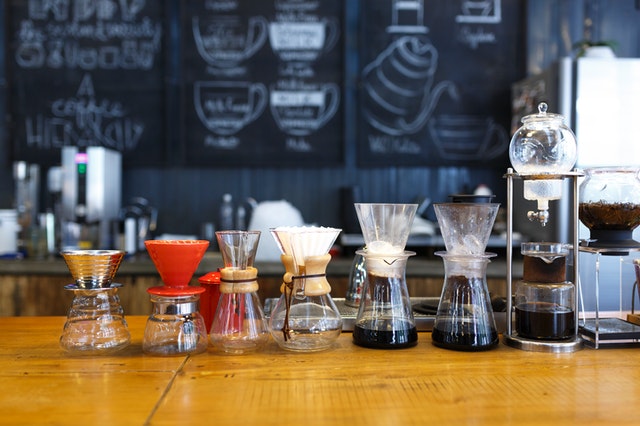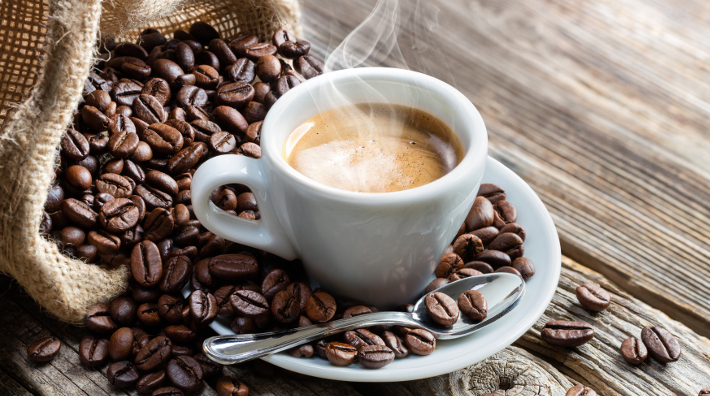Bet you cannot forget the intense flavor, the aromatic sensation, and the rich crema of a perfectly brewed shot of espresso.
Obviously, the espresso beans that you use play a big role in the quality of your espresso shot. Personal preference and other technical checklists come into play when selecting the right coffee beans for espresso.
In this article, I will lead you through the step-by-step process of deciding which coffee beans to use for an impeccable espresso shot.
What Are the Characteristics of Perfect Espresso Shot?
Appearance
A perfect espresso shot must have crema: the brown froth garnished on top of the espresso.
This crema is formed by CO2 gas microbubbles floating on the coffee. These bubbles cling to the organic oils and fats in Faema Faemina coffee and rise to the surface of the beverage. The outcome is a noticeable “Guinness” impression.
Remember that such frothy crema is a sign of good espresso.
Aroma
The scent of coffee will permeate the room as soon as the espresso is prepared.
Common factors that contribute to a delightful aroma are the freshness of beans and the roasting process. Darker roasts (meaning that the beans have gone through a longer roasting time) are usually less aromatic because the process or roasting destroys the elements that give the coffee beans their characteristics.
Aftertaste
Espresso has a more robust flavor and aroma than regular filtered coffee.
In fact, espresso aftertaste can be overwhelming to some people used to different types of brewing.
Despite the aromatic fragrance, espresso tastes stronger, bitter, deeper, and more full-bodied than other coffees.
Many coffee lovers adore this pleasing bitterness of the espresso. The reason is that bitterness can come in different forms, including floral, caramel, citric, earthy, and other overtones that make drinkers become madly in love with it.
But remember that if you brew it poorly, you will produce a shot that can be unpleasantly bitter or acidic.
What Are The Best Roasts For Espresso?
Different roasts produce very different espresso profiles:
- If you prefer a cup of espresso that is deep in flavor, try to brew a light roast coffee. Although this roast is renowned for cold brew, pour overs, and other non-pressurized brewing methods, espresso can go a long way. That is because the light roast has the highest caffeine and acidic content compared to other roasts. Therefore, light roasts will offer your shot a more complex flavor profile. So, if you want to embrace the original characteristics of the bean, a lighter roast is good to go for your espresso.
- Medium-roasted beans have a distinct flavor character and can be used in many brewing methods. This coffee is roasted a little longer than light roast, preserving the caramel sweetness of the flavor and aromatic sensation. As the aroma releases via the first crack, the roast turns out darker, well-rounded, and oily sheen, which is also an all-time favorite for espresso brewing.
Usually, because most of the properties of the beans are maintained during light and medium roasts, only high-quality beans are used for these roasts.
- People who want to consume darker coffee espresso may try a dark roast. This roast must go through high heat for a longer period. The dark roast is usually achieved when you hear the second crack while roasting. So, after roasting, the coffee becomes darker, oilier, and more full-bodied.
More About Roasting Levels
Many drinkers like a cup of coffee with a dark roast rather than a medium roast because they believe a darker roast produces better outcomes in espresso.
You might not feel a huge difference between the two while sipping. If the beans have the same origin, the dark and medium-dark roasts would have a similar taste when you use them in espresso brewing. In other words, it would not have much distinction except for personal opinions.
When selecting dark roasts beans you should look carefully at the quality of the beans: the longer the beans stay in the roaster the more their original properties get lost in the process (you can compare this to cooking a steak!). Hence, this is usually the preferred roast process to hide lower quality or defective beans.
Another important thing to know about dark roasts is that they can get oily quicker. The oil on coffee beans can have an exquisite flavor but it can clog your grinder or super automatic espresso machine.
Tips from Experts to Choose the Perfect Beans for your Espresso
The definition of “best espresso” is very personal, as different people have different taste. However, if you have no idea of what you like, here are some tips to purchase the best coffee beans for your espresso:
- Know Your Roaster: If you decide to try a new roaster, make sure you receive recommendations from your favorite coffee connoisseurs first.
- Get Smaller Batch: Purchase just a modest amount of coffee to avoid it going stale for your brewing.
- Ensure Freshness: If you get coffee beans from a small roaster, be sure they are freshly roasted. And if you purchase from a major roaster, learn about their packaging. Light, oxygen and humidity are major factors when freshness is concerned. Multilayer aluminum packages with the one way escape valve are your best choice.
- Buy Whole Beans: Your ground coffee will taste unpleasant after only several days. But whole beans would preserve their lifespan better. So, it would be best if you ground the beans right before you consume them.
- Select High-quality Bean: Not all expensive beans are good, but high-quality ones will save your cup. And poor-quality coffee tends to produce an unpleasant flavor.
- Choose Arabica Over Robusta Beans: You can’t go wrong with espressos brewed with Arabica beans. However, the best blend for espresso contain about 5–15% Robusta beans to increase the crema in your shot.


